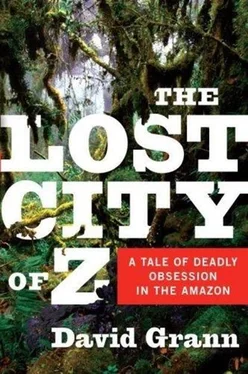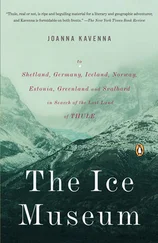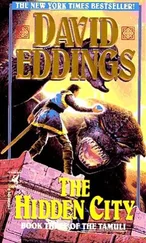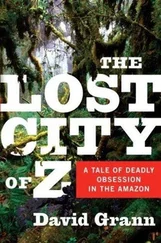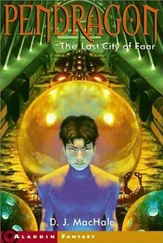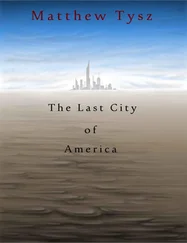The failure of Victorian explorers and ethnographers to find any similar settlements reinforced the belief that the conquistadores' accounts were “full of lies,” as one historian had earlier described Carvajal's report. Yet why had so many of the chroniclers provided such similar testimony? Recounting a German-led expedition, for instance, a sixteenth-century historian wrote:
Both the General and all the rest saw a town of disproportionate size, quite close… It was compact and well-ordered and in the middle was a house that greatly surpassed the rest in size and height. They asked the chief they had as a guide: “Whose house was that, so remarkable and eminent among the others?” He answered that it was the house of the chief, called Qvarica. He had some golden ef figies or idols the size of boys, and a woman all made of gold who was their goddess. He and his subjects possessed other riches. But a short distance beyond, there were other chiefs who exceeded that one in the number of subjects and quantity of riches.
A soldier on another expedition later recalled that “they had seen very large towns, of such an extent that they were astounded.”
Fawcett wondered where all these people had gone. He speculated that the “introduction of small-pox and European disease wiped out the indigenes by millions.” Still, the Amazon's populations seemed to collapse so swiftly and so completely that he contemplated whether something more dramatic had occurred, even a natural disaster. The Amazon, he'd begun to believe, contained “the greatest secrets of the past yet preserved in our world of today.”

THE LOCKED BOX
I am afraid there is no way for you to see the document. It's locked in a vault.”
I had arrived in Rio de Janeiro and was speaking on the phone to a university student who had been helping me track down one more manuscript, what Fawcett considered the final piece of evidence supporting his theory of a lost civilization in the Amazon. The manuscript was in Brazil's National Library in Rio, and was so old and in such poor condition that it was kept in a safe. I had filed formal requests and made appeals by e-mail. Nothing worked. Finally, as a last effort, I had flown to Rio to make my case in person.
Situated downtown in a beautiful neoclassical building with Corin thian columns and pilasters, the library contains more than nine million documents-the largest archive in Latin America. I was escorted upstairs into the manuscript division, a chamber lined with books that climbed several stories toward a stained-glass ceiling, where a faint light seeped through, revealing, amid the room's grandeur, a hint of disrepair-dilapidated wooden desks and dusty lightbulbs. The area was quiet, and I could hear the soles of my shoes clapping against the floor.
I had arranged an appointment with the head of the manuscript division, Vera Faillace, an erudite woman with shoulder-length dark hair and glasses. She greeted me at the security gate, and when I inquired about the document she said, “It is, without question, the most famous and sought-after item we have in the manuscript division.”
“How many manuscripts do you have?” I asked, surprised.
“Around eight hundred thousand.”
She said that scientists and treasure hunters from all over the world have wanted to study this particular document. After it became known that Fawcett had drawn on the manuscript for his theory, she said, his devotees have treated it almost like a religious icon. Apparently, it was the Holy Grail for the Fawcett freaks.
I had rehearsed everything I planned to say to persuade her to let me see the original document, including how important it was for me to assess its authenticity and how I promised not to touch it-a speech that began soberly enough but grew, in my desperation, more abstract and grandiose. Yet before I could start Faillace waved me through the security gate. “This must be very important to you to come all this way without knowing you'd be able to see the document,” she said. “I've put it on the table for you.”
And there, only a few feet away, opened like a Torah, was the roughly sixteen-inch-by-sixteen-inch manuscript. Its pages had turned almost a golden brown; its edges had crumbled. “This paper is not parchment,” Faillace explained. “It was from before wood pulp was added to paper. It's a kind of fabric.”
Scrawled across the pages, in black ink, was beautiful calligraphy, but many sections had been washed out or eaten through by worms and insects.
I looked at the title on the top of the first page. It said in Portuguese, “Historical account of a large, hidden, and very ancient city… discovered in the year 1753.”
“Can you make out the next sentence?” I asked Faillace.
She shook her head, but farther down more words became legible, and a librarian who spoke fluent English helped me to slowly translate them. They had been written by a Portuguese bandeirante, or “soldier of fortune.” (His name was no longer decipherable.) He described how he and his men, “incited by the insatiable greed of gold,” had set out into the interior of Brazil in search of treasure: “After a long and troublesome peregrination… and almost lost for many years… we discovered a chain of mountains so high that they seemed to reach the ethereal regions, and they served as throne for the Wind or for the Stars themselves.” Eventually, the bandeirante said, he and his party found a path between the mountains that appeared to have been “cut asunder by art rather than by nature.” When they reached the top of the path, they looked out and saw a spellbinding vista: below them were the ruins of an ancient city. At dawn, the men loaded their weapons and crept down. Amid swarms of bats, they discovered stone archways, a statue, roads, and a temple. “The ruins well showed the size and grandeur which must have been there, and how populous and opulent it had been in the age when it flourished,” the bandeirante wrote.
After the expedition returned to civilization, the bandeirante had sent the document with this “intelligence” to the viceroy, “in remembrance of the much that I owe to you.” He urged his “Excellency” to dispatch an expedition to find and “utilize these riches.”
It is not known what the viceroy did with the report, or if the bandeirante ever tried to reach the city again. Fawcett had uncovered the manuscript when he was scouring for documents in the National Library of Brazil. For more than a century after the manuscript was written, Fawcett said, it had been “pigeonholed” in bureaucratic archives. “It was difficult for an administration steeped in the narrow bigotry of an all-powerful Church to give much credence to such a thing as an old civilization,” Fawcett wrote.
The librarian pointed to the bottom of the manuscript. “Look at that,” she said.
There were several strange diagrams that resembled hieroglyphics. The bandeirante said that he had observed the images carved into some of the ruins. They seemed familiar, and I realized that they were identical to drawings I had noticed in one of Fawcett's diaries-he must have copied them after seeing the document.
The library was closing, and Faillace came to retrieve the ancient scroll. As I watched her carefully transport it back into the vault, I understood why Brian Fawcett, seeing the document years after his father and brother vanished, had proclaimed, “It feels genuine! It must be genuine!”

T HE W HOLE W ORLD I S M AD
Читать дальше
Конец ознакомительного отрывка
Купить книгу
